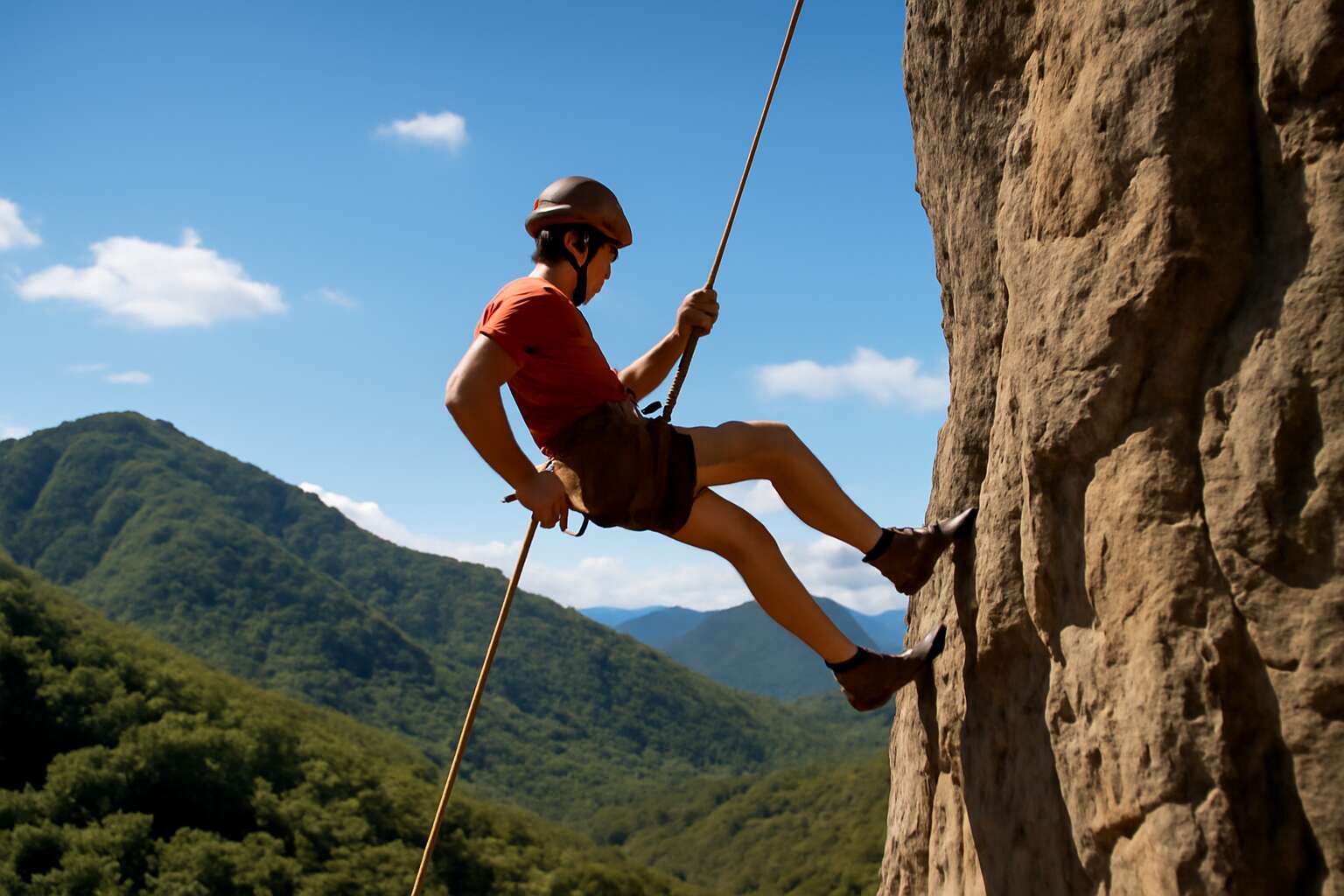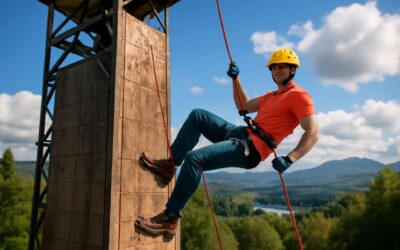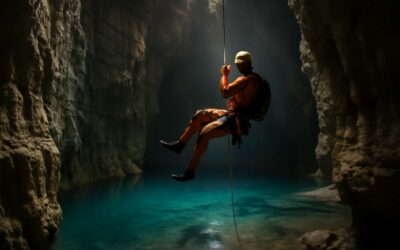Historical Background of Abseiling
Early Mountaineering and Rope Techniques – Tracing the use of ropes in early climbing activities
Long before modern climbers harnessed the thrill of abseiling, early mountaineers relied on rudimentary rope techniques to conquer treacherous terrains. The abseil origin can be traced back centuries, with ancient peoples employing simple ropes to descend cliffs and explore uncharted landscapes. These primitive methods laid the foundation for what would evolve into a sophisticated sport and essential safety technique.
Historically, the use of ropes in early climbing activities was often shrouded in necessity rather than innovation. Climbing down steep rock faces was a perilous endeavour, demanding ingenuity and resilience. Over time, these practical methods transitioned into more formalised techniques, with the development of specialised knots and harnesses. The abseil origin is intertwined with these advancements, reflecting a pursuit of safer, more efficient descent methods.
By the 19th century, mountaineers began experimenting with different rope systems, leading to the emergence of controlled descents. Although the term ‘abseiling’ and its precise technique are modern, the roots of this practice are deeply embedded in the history of rope climbing. It is a story of human perseverance—transforming simple rope use into an art form that continues to captivate adventurers today.
Development of Descending Methods – Initial methods used for descending steep surfaces
In the shadowed corridors of history, the development of descending methods for steep surfaces reveals a tale as old as time itself. Long before the modern spectacle of abseiling, daring explorers and mountaineers employed primitive yet cunning techniques to escape the abyss below. These early attempts, shrouded in necessity and ingenuity, laid the dark foundation upon which the abseil origin was ultimately forged. It was a dance with danger, a delicate balance between life and death, driven by the primal instinct to descend safely into the unknown.
As centuries passed, these rudimentary methods evolved into more sophisticated systems. The quest for safer, more controlled descents spurred innovation—introducing specialised knots, sturdy harnesses, and intricate pulley arrangements. Yet, it wasn’t until the 19th century that controlled descent techniques truly began to take shape. The abseil origin, in its nascent form, was a slow, haunting transformation—a testament to human resilience and the relentless pursuit of safer passage down treacherous cliffs.
Today, the dark allure of abseiling continues to captivate adventurers, echoing its mysterious and rugged origins. From humble beginnings rooted in necessity, the abseil origin is a story woven with resilience, ingenuity, and an unyielding desire to conquer the abyss that beckons from above.
Emergence of Abseiling as a Technique – When and how abseiling was recognized as a distinct method
The emergence of abseiling as a recognised technique is a fascinating chapter in the history of vertical exploration. While early mountaineers relied heavily on primitive rope techniques, it wasn’t until the late 19th and early 20th centuries that abseiling truly began to take shape as a specialised method. This period marked a pivotal shift, as adventurers and climbers sought controlled, safe ways to descend challenging cliffs and rock faces.
Recognised as a distinct technique, the abseil origin was driven by necessity and innovation. Pioneers experimented with specialised knots, harnesses, and pulley systems, gradually refining their approach. By the 1950s, the method had gained prominence, particularly among rescue teams and explorers pushing the boundaries of vertical terrain. Today, the abseil origin continues to influence modern techniques, revolutionising how we approach steep surfaces and ensuring safety amid the ruggedness of the natural world.
Etymology and Terminology
Origins of the Term ‘Abseil’ – Linguistic roots and language influences
The term “abseil” carries a fascinating linguistic history that echoes the evolution of climbing techniques itself. Its etymology is rooted in the Swiss German word “abseilen,” meaning “to rope down,” which beautifully captures the essence of controlled descent. This linguistic influence highlights the cross-cultural exchange between mountaineers and explorers in the Alpine regions, where the technique first gained prominence.
Over time, the term found its way into broader use within English-speaking countries, especially in the UK, where the practice of abseiling became an integral part of technical climbing. The phrase’s adoption reflects a blend of linguistic influences, including French and German, which shaped specialised terminology in the climbing community. Interestingly, the “abseil origin” of the word underscores its deep-rooted connection to European mountaineering history and the shared language of adventure.
Alternative Names and Variations – Rappelling, rapelling, and other regional terms
The fascinating journey of the abseil origin reveals a tapestry of linguistic and cultural influences that have shaped modern climbing techniques. Beyond its Swiss German roots, where “abseilen” means “to rope down,” the term has evolved across regions, reflecting a shared passion for vertical exploration. In the United Kingdom, for example, the term “abseiling” became synonymous with technical climbing, but many adventurers also use regional variations like rappelling or rapelling. These alternative names highlight the diverse linguistic landscape surrounding descending methods.
While “abseil” remains the most recognised term in Europe, “rappelling” is often preferred in North America, originating from the French word “rappel,” meaning “recall” or “pull down.” This variety in terminology enriches the language of mountaineering and underscores the abseil origin’s deep European roots. Whether called abseiling, rappelling, or by other regional names, the technique’s history is a testament to the shared human drive to conquer steep terrains with ingenuity and precision.
Evolution of the Term over Time – How the terminology has changed globally
The etymology and evolution of the term “abseil” reveal a fascinating journey through language and climbing culture. Originally rooted in Swiss German, where “abseilen” means “to rope down,” the word spread across Europe and beyond, adapting to regional dialects and climbing communities. Over time, the terminology surrounding descending methods has grown more diverse, reflecting the global nature of the sport.
In English-speaking countries, especially North America, “rappelling” emerged from the French word “rappel,” meaning “recall” or “pull down.” This variation exemplifies how linguistic influences shape climbing terminology. The term “abseil” remains dominant in Europe, but “rappelling” and other variants are now commonplace worldwide. This rich tapestry of terms not only highlights the abseil origin but also underscores the shared human drive to explore vertical terrains with ingenuity and precision.
Milestones in Abseiling Innovation
Key Pioneers and Inventors – Individuals who shaped the technique
Somewhere between daring adventurers and pragmatic engineers, a handful of pioneers etched their mark on the abseil origin story, transforming a simple descent into an art form. These innovators didn’t just stumble upon the technique—they refined it with the precision of a Swiss watchmaker and the flair of a Hollywood stuntman. From the early days of mountaineering, where ropes served as lifelines rather than leisure, to the development of specialised equipment, their contributions laid the foundation for modern abseiling.
One notable figure in the saga of the abseil origin is Jean Estéril, a French engineer whose experiments in the early 20th century led to the first documented use of controlled descents using friction devices. His work sparked a chain reaction, inspiring others to improve safety and efficiency. Over the decades, key milestones include the invention of the figure-eight descender and the development of dynamic ropes—each a vital chapter in the evolution of the abseil technique.
In essence, the abseil origin is a tapestry woven by inventive minds and daring explorers, each pushing the boundaries of what was once thought possible. Their collective efforts transformed what was once a clumsy necessity into a sophisticated skill with global reach and countless variations, including rappelling and other regional terminologies. The history of abseiling remains a testament to human ingenuity and the relentless pursuit of safe, controlled descents from heights—no matter how perilous they may seem.
Development of Equipment and Ropes – Advances in gear technology
The evolution of abseiling equipment marks a fascinating chapter in the history of human innovation. As safety standards advanced, so too did the sophistication of gear designed specifically for controlled descents. This progression wasn’t merely about better tools; it was about redefining what was possible when humans challenged the limits of gravity.
One of the most pivotal milestones in the abseil origin was the invention of specialised harnesses and friction devices. These innovations transformed abseiling from a risky activity into a reliable skill accessible to explorers and rescue teams alike. The development of dynamic ropes, with their exceptional elasticity and strength, fundamentally changed the game, enabling smoother, safer descents even from the most daunting heights.
Today, gear technology continues to evolve, with advancements like lightweight carabiners, self-braking devices, and high-tech materials that enhance safety and efficiency. These innovations reflect a relentless pursuit within the abseil origin, driven by the desire to make descents not only safer but also more precise and controlled. Every breakthrough, from the humble figure-eight descender to the state-of-the-art descenders used in modern rescue missions, underscores how far the abseiling craft has come—testament to human ingenuity and the enduring quest to conquer heights with elegance and assurance.
Abseiling in Military and Rescue Operations – Adoption by professionals and impact on safety
In the shadowed corridors of history, the abseil origin reveals a tale of relentless human endeavour and innovation. As military and rescue operations embraced this descent technique, it transformed from a daring experiment into an essential tool for survival. The adoption by professionals marked a pivotal milestone, elevating safety standards to near-mystical levels of precision and reliability.
During critical rescue missions, abseiling became a dance with danger—each controlled descent a testament to human resilience. The evolution of this craft is embodied in innovations like self-braking devices and lightweight carabiners, which dramatically reduced risks and expanded the possibilities of what could be achieved from vertiginous heights. These advancements did not merely serve convenience; they forged a new realm where safety and mastery coalesced, allowing rescue teams and military operatives to traverse treacherous terrain with unwavering confidence.
- The integration of high-tech materials and friction devices further refined the safety and efficiency of descents.
- Modern abseiling gear now supports complex manoeuvres, making it a vital component of tactical operations and life-saving efforts.
So profound is the impact of the abseil origin on professional spheres that it continues to define the very limits of human capability—each innovation a dark chapter in the relentless pursuit of mastery over gravity’s grip.
Cultural and Modern Adoption
Abseiling in Adventure Sports – Rock climbing, canyoning, and beyond
Today, abseiling has transcended its utilitarian roots, embedding itself into the vibrant tapestry of modern adventure sports. Its roots, however, are shrouded in a fascinating blend of necessity and innovation, evolving from niche climbing techniques into a cultural phenomenon. In the realm of rock climbing and canyoning, abseiling is no longer just a rescue or military manoeuvre—it’s an exhilarating activity that captures the imagination of thrill-seekers worldwide.
The popularity of abseiling in adventure sports has led to an eclectic adoption across diverse disciplines. From adrenaline-pumping canyon descents to technical rock faces, the abseil origin reflects a deep-seated human desire to explore vertical landscapes with precision and daring. This technique’s versatility is exemplified by its widespread use in adventure tourism, where it offers a unique perspective on natural wonders. As the technique has advanced, so too has its cultural significance, becoming a symbol of adventure and resilience. Whether descending into a hidden canyon or tackling a towering cliff, the abseil remains an iconic element of modern outdoor pursuits, echoing its storied abseil origin with each controlled descent.
Training and Safety Standards – How modern practices have evolved
Modern abseiling has undergone a remarkable transformation, driven by the relentless pursuit of safety and mastery. Today’s training standards are a meticulous blend of science and artistry, ensuring that adventurers descend with confidence and control. The evolution of safety protocols reflects a deep understanding of risk management, integrating innovations like harness design, dynamic ropes, and comprehensive instruction. These advancements are not just technical—they encapsulate the spirit of resilience and respect for the environment.
In the realm of adventure sports, safety standards are now universally embraced, fostering a culture that values preparedness above all. This shift is exemplified by the widespread adoption of industry certifications and specialised training modules designed to elevate skill and minimise hazards. As the abseil origin morphs from utilitarian necessity to an emblem of daring exploration, it remains crucial that modern practitioners uphold rigorous safety practices, ensuring each descent is as secure as it is exhilarating.
- Enhanced gear technology
- Standardised safety procedures
- Comprehensive training programmes
- Regulatory compliance
Through these evolving practices, the abseil origin continues to inspire a new generation of explorers—those who venture into the vertical unknown with reverence, skill, and an unwavering commitment to safety. The enchanting dance of control and courage now stands on a foundation built by decades of innovation, making each descent not just an act of adventure but a testament to human ingenuity and the enduring allure of the vertical frontier.
Global Popularity and Variations – Regional adaptations and current trends
Across continents and cultures, the abseil origin has woven itself into the fabric of adventure and exploration, transcending mere utility to become a symbol of human resilience. From the icy fjords of Scandinavia to the rugged canyons of North America, regional adaptations have blossomed, each infused with local ingenuity and tradition. In Japan, for example, the technique melds seamlessly with mountain rescue practices, while in South Africa, it’s embraced by thrill-seekers eager to conquer natural heights. These variations reflect not just differing terrains but also a collective reverence for the vertical frontier.
Modern trends continue to push the boundaries of what is possible, with innovations such as lightweight harnesses and specialised dynamic ropes elevating safety standards worldwide. The abseil origin — once a simple descent method — now inspires a global community of explorers, whose diverse approaches and cultural nuances enrich the craft. It’s a dance of daring that celebrates both innovation and tradition, forging a legacy that beckons new generations to embrace the vertical with reverence and vigour.
Future Perspectives of Abseiling
Technological Innovations – Upcoming gear and safety enhancements
As technology continues to evolve at a breathtaking pace, the future of abseiling promises to be even more innovative and safer than ever before. Cutting-edge gear, such as ultra-lightweight harnesses and electronically assisted descent devices, is set to redefine the boundaries of what is possible in vertical exploration. These advancements not only enhance safety but also expand accessibility, allowing a wider array of enthusiasts and professionals to embrace the thrill of abseiling.
Emerging safety enhancements are particularly exciting. Smart sensors integrated into ropes and harnesses could soon provide real-time feedback on tension and wear, drastically reducing the risk of accidents. Additionally, materials like high-performance composites and biodegradable fibres will likely become standard, fostering a more sustainable approach to the abseil origin and its ongoing development. As these innovations unfold, they will undoubtedly inspire new techniques and elevate the art of descending—transforming what was once a manual skill into a sophisticated symphony of engineering and human courage.
Potential New Applications – Emerging uses in various industries
As the shadows of innovation lengthen, the future of abseiling beckons with a tantalising promise of uncharted possibilities. Emerging applications across diverse industries are transforming the abseil origin from a purely adventurous pursuit into a vital tool of modern engineering and rescue. Imagine harnessing the dark, silent power of vertical descent for urban construction, where skyscraper maintenance and window cleaning now rely on advanced abseiling techniques. Similarly, in disaster response, specially designed abseil gear enables swift access to inaccessible terrain, saving lives amid chaos and ruin.
Furthermore, the integration of smart technology and specialised materials hints at a new era. Future applications could include:
- Autonomous descent systems for hazardous environments
- Enhanced safety protocols driven by real-time sensor data
- Eco-friendly materials reducing environmental impact
Such innovations are set to expand the reach of abseiling, transforming it from a niche skill rooted in the abseil origin to an indispensable element in high-stakes industry and exploration. The evolution of these potential new applications promises a dark, thrilling future where human ingenuity and technological mastery dance in perfect harmony, elevating the art of descent into a realm of endless possibility.
Educational and Environmental Importance – Promoting safety and conservation efforts
The future of abseiling holds more than just technological innovation; it carries profound educational and environmental significance. As safety standards continue to evolve, understanding the abseil origin becomes essential for fostering safer practices across industries. Promoting awareness about the roots of abseiling not only honours its adventurous past but also ensures responsible usage in modern applications.
Environmental conservation is increasingly intertwined with the development of new abseiling techniques. By employing eco-friendly materials and sustainable gear, professionals can reduce their ecological footprint while maintaining rigorous safety protocols. This harmony between innovation and preservation underscores the transformative potential of abseiling in promoting environmental stewardship.
Looking ahead, integrating educational programmes that highlight the abseil origin can inspire future generations of engineers, rescue workers, and adventurers alike. Emphasising the historical evolution of the technique fosters a deeper appreciation for its significance, encouraging mindful application and ongoing advancement.



0 Comments